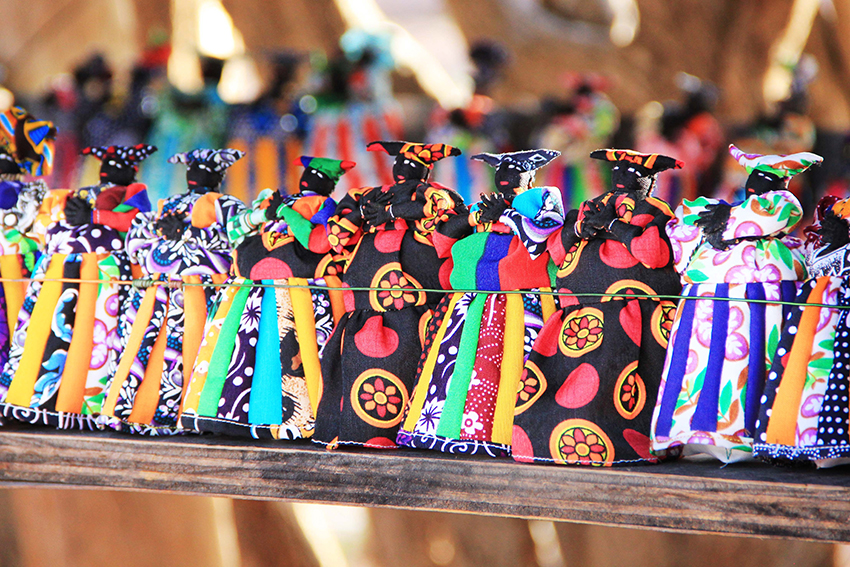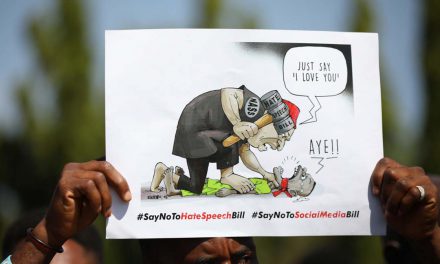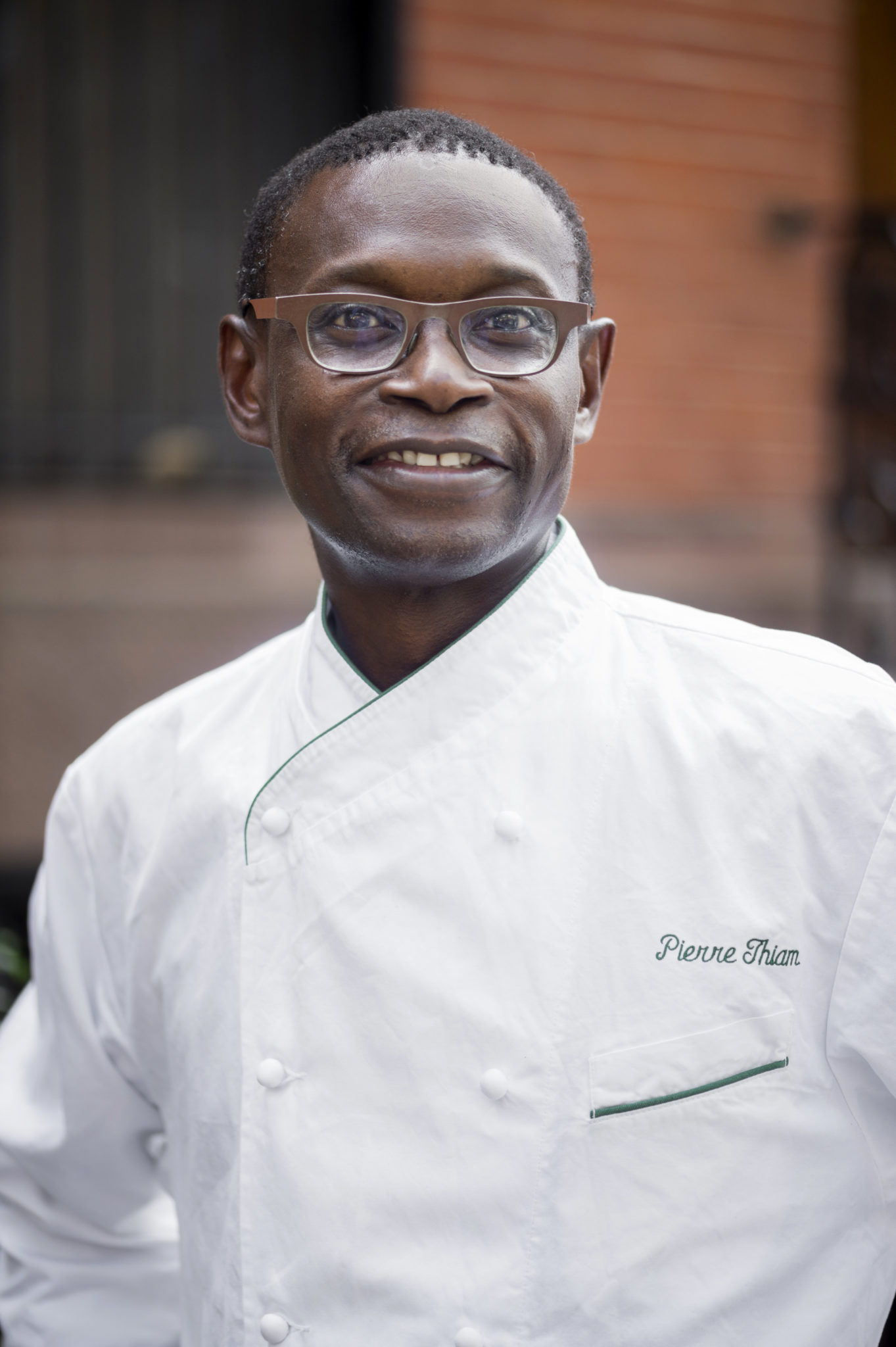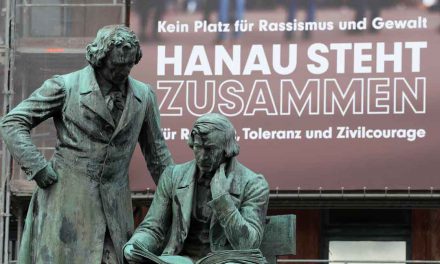
Herero dolls, Namibia © Pixabay
In the context of deep ethnic divisions and conflicts on the African continent perhaps Namibia is getting some important things right
When Hage Geingob was declared the ruling South West Africa People’s Organisation (SWAPO) Party’s presidential candidate for the 2014 election, some commentators cautiously suggested that Namibia had moved into a “post-ethnic” political phase.
Geingob, from the minority Damara ethnic group, was a popular choice at the ruling party’s elective congress of November 2012. He competed against no fewer than seven other senior party leaders, all of whom were from various sub-groups within the majority Owambo ethnic group, which makes up roughly 50 percent of Namibia’s population of around 2.3 million.
Since independence from apartheid South Africa in 1990, political leaders in Namibia have claimed to cultivate a national culture of inclusiveness. Even so, at times over the last two and a half decades divisive ethno-nationalistic expression has slipped, and sometimes burst into the open.
The run-up to the SWAPO Party elective congress of 2012 was characterised by the sort of polarising identity politics that still marks the political landscapes of most African countries. Some ethno-centric factions within the ruling party were adamant that the national president should be an Owambo because of the strong historical role the group played in the liberation struggle, and because it is the majority population group.
Ethnic tensions were so high in the months leading up to the congress that there were fears of instability. Later it emerged, inadvertently, that the Namibia Central Intelligence Service had instituted a programme to monitor ethno-political machinations across the country.
In the end, the rallying vote for Geingob at the elective congress was something of a transcendent incident: delegates voted across ethnic lines after intense behind-the-scenes politicking and horse-trading.
As recently as mid-2016 a senior ruling party political office bearer, Omaheke Regional Governor Festus Ueitele, was embroiled in an ethnicity- related spat with residents of the easterly region bordering Botswana.
The incident drew national attention and required Geingob’s intervention.
In June this year Ueitele, who is from the Owambo ethnic group, was recorded as saying: “You should be careful with Hereros. These are the type of people who will become your friends only when they want something from you.”
The Ovaherero group makes up the majority of the region, and the remark was made in the presence of the Tswana chief of the Bakgalagadi ba Namibia, Hubert Ditsabue, and his daughter, Josepha Ditsabue, a representative of the SWAPO Party Women’s Council. Members of the region’s Ovaherero community called for his firing for stoking ethnic tensions.
In late July Geingob stepped in. He is reported to have instructed Ueitele to “take concrete steps to bring calm to the situation by issuing a public apology to the Ovaherero community to restore the spirit of peace, unity and trust within the Omaheke region”. Ueitele issued an apology at the end of that month.
So Namibia is not a “post-ethnic” society, and relations between the various ethnic groups remain sensitive. The country has 13 officially recognised ethnic groups, including Namibians of European origin and those of a mixed race heritage labelled as “Coloured”.
Ethnicity has had a profound impact on Namibian politics since the pre- colonial period, an era of internecine ethnic conflict, and through the German colonial and South African apartheid- rule years, when the different ethnic groups were geographically segregated; a situation which largely persists today.
“The negative effects of apartheid are still very apparent in how various ethnic groups in Namibia perceive and interact with each other,” says Natasha Tibinyane, director of the
Namibia chapter of the Media Institute of Southern Africa. “It is apparent in the way that we still regard each other based on the classifications prescribed to us by the apartheid dispensation, which classified some groups as more valuable than others.”
Arguably the greatest test to date of the strength of Namibia’s ethnic quilt was the secession attempted by ethnic nationalist forces in the north- eastern Zambezi region (formerly the Caprivi region) in 1999.
Led by then opposition leader, Mishake Muyongo, then president of the Democratic Turnhalle Alliance (DTA) of Namibia, the secessionists struck at state facilities in the region in the late hours of August 2, 1999. During fighting between Namibian police and military forces and what was called the Caprivi Liberation Army, 14 people were killed and hundreds more rounded up. Scores fled the country, including Muyongo, who lives in exile in Denmark.
The secession attempt was followed by the longest running trial in Namibian history, in which 134 individuals were tried for treason. Though the trial was essentially concluded by early 2016, it had yet to completely wind down by the beginning of August 2016 because some of those found guilty went on appeal.
The issue of secession in the Zambezi region is not settled; pro-secession forces, known as the Caprivi Concerned Group, are still active in the region.
Founded as the Owamboland People’s Organisation in the 1950s to struggle for Namibian independence, the SWAPO Party has since remade itself as a national party representing all Namibian groups.
Election results since 1990 reflect the fact that the party draws support from virtually all communities, even though its bedrock remains the Owambo community within which it has commanded as much as 90 percent support during elections.
Meanwhile, the opposition has become more ethnically fragmented. The current official opposition, the DTA, formed as a proxy apartheid party before independence, was set up along ethnic lines. Although a much reduced force
in Namibian politics, it still reflects its origins, being mainly dependent on votes from the Ovaherero community.
The National Unity Democratic Organisation is also essentially an Ovaherero party, while the United Democratic Front, which mainly represents Damara interests, is also ethnicity-based.
Notably, opposition parties with an ethnic base have proven more resilient since 1990 than those—such as the defunct Congress of Democrats and the greatly diminished Rally for Democracy and Progress—which have tried to bridge ethnic divisions.
It could be argued that the domination of opposition politics by ethnicity-based parties has limited their effectiveness, given that they are primarily seen as representing specific communities.
Yet “ethnic tension is often a muted affair in Namibia, and only very rarely emerges as physical confrontation or violence”, says Graham Hopwood, executive director of the Institute for Public Policy Research, and author of “A Guide to Namibian Politics” (2008).
“It seems likely SWAPO will manage its limited ethnic tensions while the opposition will remain hobbled by their limited ambition, which is partly a result of their ethnic blinkers, for the foreseeable future.”
Since taking office in March 2015, Geingob’s government appears to have revitalised its “My Namibia, My Country, My Pride” campaign. However, even well-meaning initiatives will probably only have the effect of papering over ethnic cracks that run deep as a consequence of stubborn power and economic imbalances within and between Namibia’s ethnic communities.












